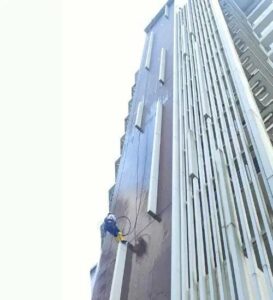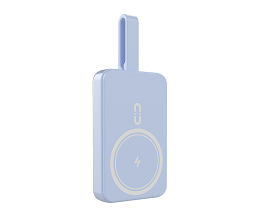Bathrooms are among the most moisture-intensive spaces in any home. Daily exposure to water, humidity, and temperature variations make them especially vulnerable to water damage. In Singapore’s humid climate, even the smallest fault in waterproofing can lead to leaks, mould growth, and long-term structural damage.
Proper bathroom waterproofing is not just a one-time installation—it requires consistent maintenance and awareness. When done right and well-maintained, it can last for years without issue. In this article, we’ll explore proven strategies to help you keep your bathroom waterproofing system intact. And when needed, know when to seek help from a qualified Waterproofing Specialist in Singapore.

Why Bathroom Waterproofing Fails
Before learning how to protect your waterproofing, it’s essential to understand why bathroom systems typically fail.
Common Causes of Waterproofing Failure:
- Aging of materials: Waterproofing membranes degrade over time.
- Poor installation: Incorrect layering or insufficient curing leads to premature failure.
- Substrate movement: Building settling or vibrations can cause cracks.
- Neglected maintenance: Cracked grout or deteriorated sealants allow water seepage.
- Overexposure to chemicals: Harsh cleaners erode protective coatings.
Waterproofing failure doesn’t always show up instantly. It often begins subtly—damp patches, peeling paint, or a musty smell. Timely action and good upkeep habits help extend the lifespan of your system.
The Role of a Waterproofing Specialist in Singapore
A Waterproofing Specialist in Singapore ensures your bathroom is properly sealed and protected against long-term moisture damage. They use professional tools to assess risks, identify existing leaks, and recommend the best waterproofing solutions based on the structure, materials, and exposure level.
They also offer preventive maintenance services, helping you keep the waterproofing intact for years through inspections, repairs, and periodic upgrades. Partnering with a specialist ensures that both the installation and aftercare of your waterproofing system are professionally managed.
Best Practices to Keep Bathroom Waterproofing Intact
Here’s how you can protect your bathroom’s waterproofing system over time:
1. Maintain Tile Grout and Sealing
Grout acts as the first barrier to water infiltration. When it begins to crack or wear away, water can seep through tiles into the waterproof membrane.
What You Should Do:
- Inspect grout lines every few months.
- Re-grout cracked, loose, or discoloured areas.
- Use epoxy grout in high-moisture zones, which is more durable.
- Seal grout lines annually with a water-repellent sealer.
2. Reseal Bathroom Fixtures
Fixtures such as sinks, bathtubs, shower screens, and countertops are sealed with silicone to prevent water from entering joints and wall penetrations. Over time, these sealants shrink or peel.
What You Should Do:
- Inspect silicone joints around fixtures quarterly.
- Remove old, mouldy, or brittle sealants and reapply fresh silicone.
- Use mould-resistant silicone formulated for wet areas.
3. Avoid Harsh Chemical Cleaners
Many commercial cleaning products contain acids or bleach that gradually break down waterproof coatings and tile surfaces.
What You Should Do:
- Use pH-neutral or mild cleaners for routine cleaning.
- Avoid scrubbing with hard brushes on sealed joints or membranes.
- Rinse thoroughly after applying any cleaning product.
4. Ensure Good Ventilation
Humidity buildup accelerates waterproofing degradation and creates a favourable environment for mould. Proper ventilation helps dry the space after each use.
What You Should Do:
- Install exhaust fans and use them during and after showers.
- Open bathroom windows or doors whenever possible.
- Wipe down wet surfaces regularly to reduce condensation.
5. Monitor for Early Signs of Leakage
Waterproofing issues often begin behind walls or under floors. By recognizing early warning signs, you can act before the damage worsens.
What to Look Out For:
- Damp patches on adjacent room walls or ceilings
- Mould growth at corners or tile joints
- Peeling paint or bubbling plaster
- Persistent musty smells
If any of these signs appear, consult a Waterproofing Specialist in Singapore for a detailed inspection.
6. Check for Floor Movement or Tile Loosening
Building movement or poor tile installation can cause cracks, which compromise the waterproofing layer beneath.
What You Should Do:
- Step lightly and feel for hollow or loose tiles.
- Repair any broken tiles promptly.
- Use anti-crack mats or flexible membranes under tiles during renovations.
7. Prevent Overloading Wet Zones
Heavy cabinets, washing machines, or storage units placed in wet zones can cause surface stress, leading to cracking or waterproofing failure.
What You Should Do:
- Place furniture in dry zones or elevated on waterproof legs.
- Avoid placing weight on corners or junctions where membranes are more vulnerable.
8. Avoid DIY Repairs for Leaks
Patching leaks using off-the-shelf sealants may offer temporary relief but rarely address the root cause. Improper repair can trap moisture inside, causing worse damage over time.
What You Should Do:
- If persistent leaks occur, stop using the affected area.
- Call a Waterproofing Specialist in Singapore to conduct a moisture assessment.
- Let professionals repair or reapply membranes with proper surface preparation.
Waterproofing Maintenance Schedule
Creating a maintenance calendar can help you stay on top of waterproofing upkeep:
| Task | Frequency | Responsible Party |
| Grout and sealant inspection | Every 3–6 months | Homeowner |
| Exhaust fan maintenance | Every 6 months | Electrician or homeowner |
| Moisture check on adjacent walls | Yearly | Waterproofing specialist |
| Drain cleaning | Monthly | Homeowner |
| Full waterproofing inspection | Every 12 months | Waterproofing specialist |
When to Consider Re-Waterproofing Your Bathroom
Even with good maintenance, waterproofing doesn’t last forever. Most systems are effective for 5–10 years, depending on usage and exposure. If your bathroom is over a decade old or undergoing renovation, it may be time for a waterproofing upgrade.
Consider re-waterproofing if:
- You’re planning a tile replacement or layout change
- Repeated leaks have occurred within a short time
- Previous waterproofing was poorly executed
- The bathroom has no exhaust or ventilation system
- Surface repairs no longer resolve the dampness issue
A Waterproofing Specialist in Singapore can help you assess whether a full re-waterproofing is necessary or if spot repairs will suffice.
Waterproofing Methods Commonly Used in Bathrooms
If you do need to re-waterproof your bathroom, several professional systems are available:
Cementitious Waterproofing
A common choice for wet areas due to its ease of application. It is cost-effective and resistant to water pressure but not very flexible.
Liquid Membranes (PU or Acrylic)
Applied with a brush or roller, these create seamless waterproof layers. They are ideal for areas with minor movement or hard-to-reach zones.
Sheet Membranes
Bituminous or PVC-based sheets offer durability and are excellent for subfloor and under-tile waterproofing. These require careful joint sealing.
Hybrid Systems
Combining sheet membranes for the floor and liquid membranes for walls provides maximum protection in high-risk areas.
Working with a Waterproofing Specialist in Singapore ensures the correct system is selected based on the specific layout, condition, and requirements of your bathroom.
Common Waterproofing Mistakes to Avoid
Some missteps can compromise the integrity of your waterproofing system—even if your intentions are good.
- Skipping primer before membrane application
- Not sealing around pipe penetrations or drainage outlets
- Using incompatible tiles or adhesives
- Ignoring manufacturer curing times
- Failing to reinforce junctions and corners
Avoiding these mistakes reinforces the durability of your waterproofing system and reduces the risk of leaks.
Conclusion
Keeping your bathroom waterproofing intact for years is a matter of planning, awareness, and preventive care. While waterproofing systems are robust, they are not maintenance-free. Small actions—like cleaning grout, resealing fixtures, and monitoring ventilation—go a long way in preserving your bathroom’s integrity.
When more serious issues arise, don’t take chances. Engage a professional Waterproofing Specialist in Singapore to assess, repair, or upgrade your system using the best tools and methods available. Their expertise ensures your bathroom stays dry, mould-free, and structurally sound for many years to come.
Protecting one of the most frequently used spaces in your home starts with the right knowledge—and the right support. Stay vigilant, act early, and work with experts to ensure your waterproofing investment delivers lasting results.





